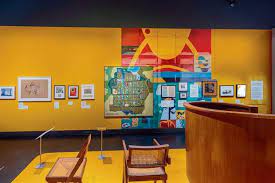LONDON: An exhibition that opened at the Victoria and Albert (V&A) Museum in London this month celebrates the architectural style of Tropical Modernism, associated with independent India’s first major building projects, including the city of Chandigarh.
International modernism, associated with British architects Jane Drew and Maxwell Fry, was a colonial architecture developed against the background of anti-colonial struggle across India and West Africa. The crux of the style was adapting a modernist aesthetic that valued function over ornament to the hot, humid conditions of the region.
“We deliberately set out to complicate the history of Tropical Modernism by looking at the architecture against the anti-colonial struggle of the time, and by engaging with and centring South Asian and West African perspectives,” said Christopher Turner, the V&A’s Keeper of Art, Architecture, Photography & Design.
“The story of Tropical Modernism is one of colonialism and decolonisation, politics and power, defiance and independence; it is not just about the past, but also about the present and the future. The exhibition looks at the colonial origins of Tropical Modernism in British West Africa, and the survival of the style in the post-colonial period when it symbolised the independence and progressiveness of newly independent countries like India and Ghana,” he said.
Drew and Fry worked primarily in India and Ghana, as following independence Indian prime minister Jawaharlal Nehru and Ghanaian prime minister Kwame Nkrumah commissioned major new projects in this style.


